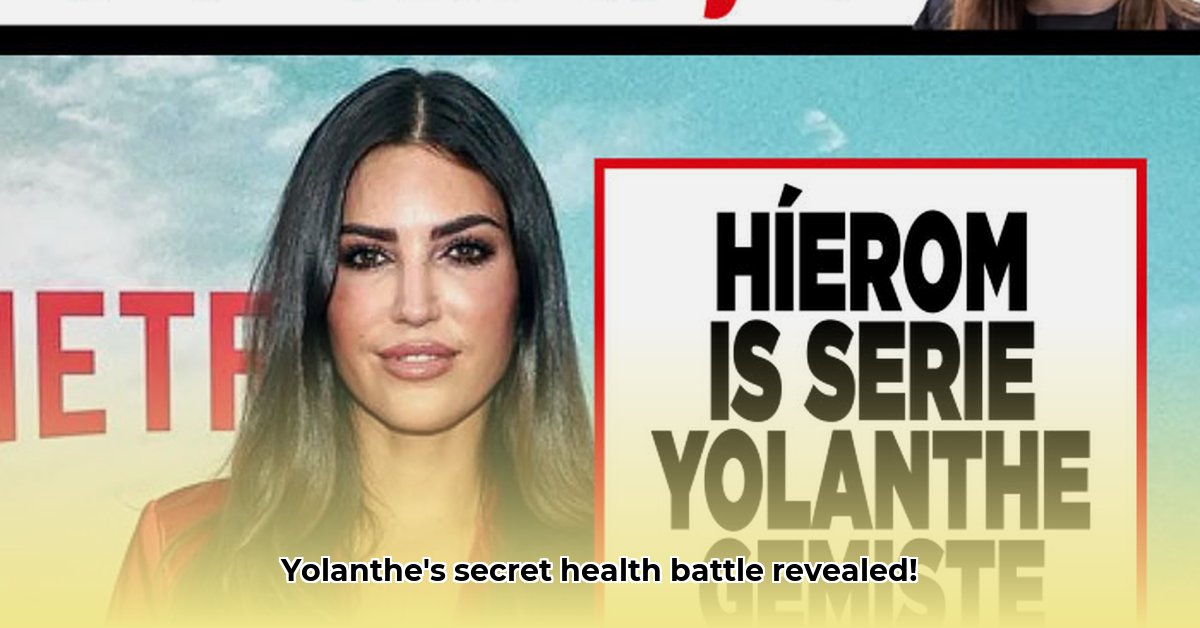
Yolanthe Gezicht's Appearance Sparks Conversation
Yolanthe Gezicht's recent appearance on RTL Late Night has ignited a robust discussion around media responsibility and the portrayal of celebrity health. Her noticeably altered appearance prompted widespread speculation, ranging from cosmetic procedures to more serious health concerns. However, subsequent reporting in publications like Elle and AD clarified the situation, revealing a connection to hormonal treatments related to fertility. This case study highlights the complexities of navigating celebrity health in the public eye and emphasizes the need for responsible journalism.
The Initial Reaction and Subsequent Revelations
The immediate online reaction to Yolanthe's appearance was a flurry of conjecture, with many speculating about potential cosmetic surgeries or drastic beauty treatments. Social media platforms buzzed with opinions, demonstrating the ease with which assumptions are made based solely on visual interpretation. This initial wave of speculation, however, was later countered by more nuanced reporting.
Reliable Dutch news outlets, including Elle and AD, shed light on the actual situation. They revealed Yolanthe's appearance changes were possibly linked to hormonal treatments undertaken as part of a fertility journey. This revelation shifted the narrative from superficial aesthetic critiques to a far more sensitive discussion surrounding fertility struggles and their potential physical consequences. A pivotal point of this story is that it wasn't about plastic surgery but about the reality of hormone therapy and its effect on facial features.
The Emotional Toll and Broader Implications
The intense public scrutiny following Yolanthe's appearance comes at a considerable emotional cost. Imagine the added stress and pain of navigating fertility challenges while simultaneously facing unwarranted criticism and speculation about one's appearance. This situation serves as a stark reminder of the need for empathy and responsible reporting when discussing sensitive health issues, especially those related to celebrities who may already feel pressured to maintain a particular public image. The intense pressure celebrities face creates a situation where even private health matters become public domain.
This incident extends beyond Yolanthe's personal experience. It highlights the often-overlooked physical side effects of fertility treatments and the lack of public understanding surrounding them. Many women experience similar changes, but their stories often go untold. Yolanthe's high profile shone an unexpected light on these often private health journeys, generating further discussions on a topic that often remains unspoken. Her experience serves as a crucial case study in responsible reporting and public awareness.
Towards Responsible Reporting and Public Awareness
What can we learn from this incident? Responsible reporting and increased public awareness are paramount. Media outlets must exercise caution, verifying information before publishing, and prioritising accuracy and sensitivity over sensationalism when reporting on personal health matters. Respect for privacy is crucial. Furthermore, it is vital to foster open dialogues about fertility treatments and their potential consequences, helping educate the public and promoting greater understanding and empathy. Ultimately, the goal is to avoid repeating instances where personal health decisions are subject to undue public scrutiny and judgment.
Key points from this case study:
- The initial reaction to Yolanthe's appearance showcased the swiftness of judgement and spread of speculation in the digital age.
- Subsequent reporting revealed the connection between Yolanthe's appearance and her hormonal treatment for fertility purposes.
- This incident underscored the need for more empathetic and responsible reporting on celebrity health issues.
This event serves as a powerful example of how easily assumptions are made, particularly in a digital age where information spreads rapidly. It underscores the need for responsible reporting that prioritizes empathy and accuracy above sensationalism. It also reminds us to foster a more understanding and supportive society, where personal health journeys are treated with respect and sensitivity.